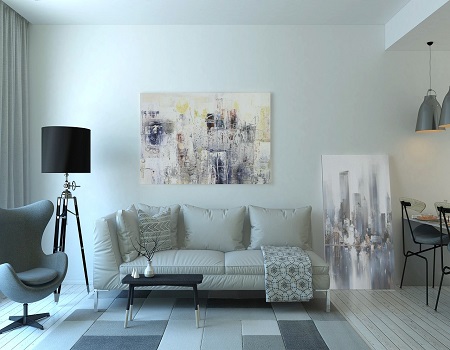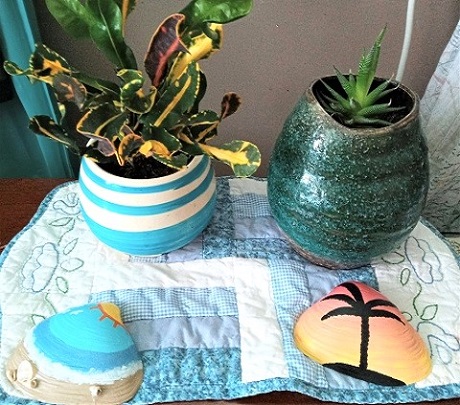Transform Your Living Space: A Fresh Look at Home Decor Essentials
 Start With a Clear Vision
Start With a Clear Vision
Before buying new items or rearranging furniture, take time to visualize what you want your space to feel like. Are you going for cozy and rustic? Sleek and modern? Light and airy? A clear aesthetic direction will guide your choices and prevent impulse buys that don’t match your overall theme.
Create a vision board using Pinterest or a collage of magazine clippings to gather your ideas. This will help you define a color scheme, furniture style, and overall ambiance. Keep in mind that consistency across rooms creates a more harmonious flow throughout the home.
Color Sets the Tone
Color is a powerful tool in home decor. It influences mood, defines space, and pulls everything together. Neutral tones like beige, white, and gray can create a calm and sophisticated atmosphere. Meanwhile, bold colors like deep blue, emerald green, or terracotta can add drama and personality.
Accent walls, colored furniture pieces, or decorative items like throw pillows and rugs are great ways to introduce color without overwhelming a space. If you’re hesitant to commit, start small and see how each addition changes the feel of the room.
Layered Lighting is Key
Lighting can transform a space more dramatically than almost any other element. It’s not just about visibility—it’s about atmosphere. A well-lit room uses layers of light: ambient (general), task (functional), and accent (decorative).
Consider using a combination of ceiling fixtures, floor lamps, table lamps, and wall sconces. For a cozy ambiance, opt for warm bulbs and install dimmer switches to control brightness. Highlight artwork or architectural features with directional spotlights or picture lights for added depth and interest.
Wall Art That Tells Your Story
One of the most impactful ways to personalize your home is through wall art. From family portraits and travel photography to abstract paintings and vintage posters, the art you choose speaks volumes about who you are.
When hanging art, eye-level placement is ideal—typically about 57–60 inches from the floor to the center of the piece. For gallery walls, start with the largest piece in the center and build outwards. Don’t forget to use the right hanging hardware for pictures to ensure safety and stability, especially for heavier frames. The right hardware not only prevents damage to your walls but also makes your display look professionally installed.
Furniture That Fits Your Lifestyle
Invest in furniture that serves your lifestyle, not just your aesthetic. A stylish sectional sofa might look great in a showroom, but if it doesn’t fit your space or seating needs, it will quickly become a frustration. Measure your rooms and plan layouts using tools or apps that help you visualize scale and flow.
Multifunctional furniture—like ottomans with storage, fold-out desks, or extendable dining tables—can make a big difference, especially in smaller homes or apartments.
Textiles Add Texture and Warmth
Textiles play a crucial role in softening a room and adding visual interest. Think beyond just curtains and rugs—consider throw blankets, cushions, upholstered furniture, and fabric wall hangings.
Mix materials like linen, velvet, and wool for a layered look. Patterns such as stripes, florals, or geometric designs can energize a neutral palette, while solid-colored textiles help tone down a busier room.
Plants for a Breath of Fresh Air
Indoor plants do more than look pretty—they improve air quality and add a sense of calm. Whether you’re a seasoned plant parent or a beginner, there’s a plant to suit every skill level.
Popular options include:
– Snake Plant (low maintenance and thrives in low light)
– Pothos (fast-growing and forgiving)
– Fiddle Leaf Fig (for a bold statement)
– Succulents (great for desktops and shelves)
Group plants together for a lush, jungle-like vibe, or place a large potted tree in a corner to draw the eye upward and make the room feel taller.
Open Shelving: Style and Storage
Open shelving is a great way to showcase your style while keeping everyday items accessible. In kitchens, use open shelves to display dishware, glass jars, and cookbooks. In living rooms or offices, style them with a mix of books, art, vases, and decorative objects.
Keep things balanced by mixing sizes and heights, and remember the rule of thirds—group items in odd numbers for a more natural, less cluttered look.
Personal Touches Make It Home
The best home decor reflects the people who live there. Incorporate items that hold sentimental value—a vintage clock from your grandparents, souvenirs from your travels, or a collection you’ve built over time.
Custom artwork, monogrammed items, or DIY decor projects add a layer of uniqueness that mass-produced goods simply can’t offer. These personal touches turn a house into a home.
Keep Evolving
Home decor is not a one-and-done project. As your tastes evolve and your life changes, so should your space. Don’t be afraid to switch things up—rearrange furniture, rotate your art collection, or try a new color on the walls.
Seasonal updates like new throw pillows in fall tones or lighter curtains in summer can keep your home feeling fresh and in sync with your environment.
Final Thoughts
Great home decor isn’t about following trends—it’s about creating a space where you feel comfortable, inspired, and at peace. By focusing on elements like color, lighting, furniture, and personal touches, you can design a home that feels just right for you.
And remember, even the smallest details matter. Using proper hanging hardware for pictures, choosing textiles that invite touch, or placing a single plant in just the right spot can elevate your space in subtle but powerful ways. Start with what you have, add thoughtfully, and let your style shine.
